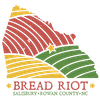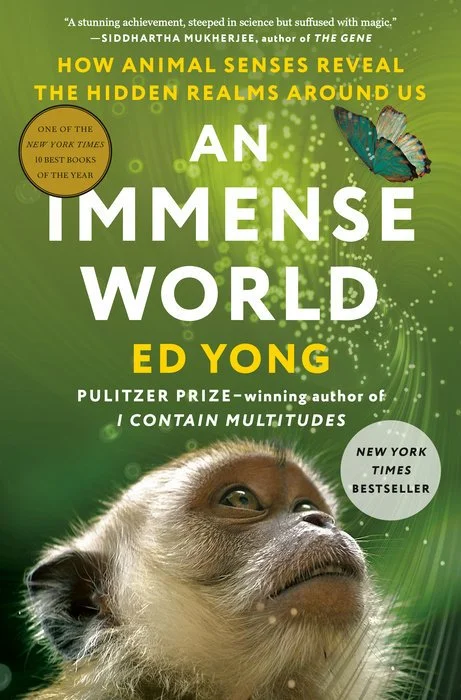An Immense World by Ed Yong
The group met in February to discuss this fascinating tour of the unique ways animals perceive their surroundings.
Random House, 2022, www.penguinrandomhouse.com
The Sustainability Book Club met on February 2 to discuss An Immense World: How Animal Senses Reveal the Hidden Realms Around Us by Ed Yong, a Pulitzer Prize–winning science journalist. In the book, Yong explains how all animals, humans included, live in their own sensory bubble, “perceiving but a tiny sliver of our immense world.” To help us better understand the natural world, he takes us on a journey through the many ways that animals perceive their surroundings, from senses well-known to us—like vision, smell and hearing—to unfamiliar senses, such as the ability to detect electric and magnetic fields. Through his excellent storytelling and illuminating case studies, he helps us to think beyond the confines of our own senses and realize how expansive and amazing nature truly is.
A few fascinating facts from the book:
Most animals can see ultraviolet light, which is largely invisible to humans. Some flowers that appear as a solid color to us feature UV patterns that serve as a guide to pollinators.
Butterflies and other insects can taste the plants they land on using taste receptors on their feet.
Tree frog embryos can detect the vibrations of an attacking predator and will hatch early from their eggs to escape.
One hummingbird species sings ultrasonic notes that are inaudible to its own ears.
Some fish can both produce and sense electric fields to find prey, detect obstacles and communicate to other fish.
Key takeaways:
The majesty of nature is not restricted to wild areas; wonders can be found in our own backyards.
We may never really know what it is like to be another animal, but we can use our imagination to try to step into their worlds.
If we increase our understanding of animal senses, we can better understand how we are harming specific species.
There are ways we can reduce harmful light and noise pollution, including dimming or shutting off exterior lights when not in use, advocating for quiet zones in parks and sound-absorbing pavements on roadways, and diverting or slowing down vehicles near important areas of wilderness.
Pick up a copy of the book to learn more about animals’ surprising sensory abilities. As one book club member stated, “It boggles the mind to read about them. Another book to keep on our shelves to return to every now and then.”
The Sustainability Book Club
Join a group of avid readers who meet monthly to engage in lively discussions focused on books about sustainability. The club meets at 6:30 p.m. on the first Thursday of every month on Zoom. Contact us to join!
March 2: Mini-Forest Revolution: Using the Miyawaki Method to Rapidly Rewild the World by Hannah Lewis
April 6: Saving the Wild South: The Fight for Native Plants on the Brink of Extinction by Georgann Eubanks
May 4: Fen, Bog and Swamp: A Short History of Peatland Destruction and Its Role in the Climate Crisis by Annie Proulx

